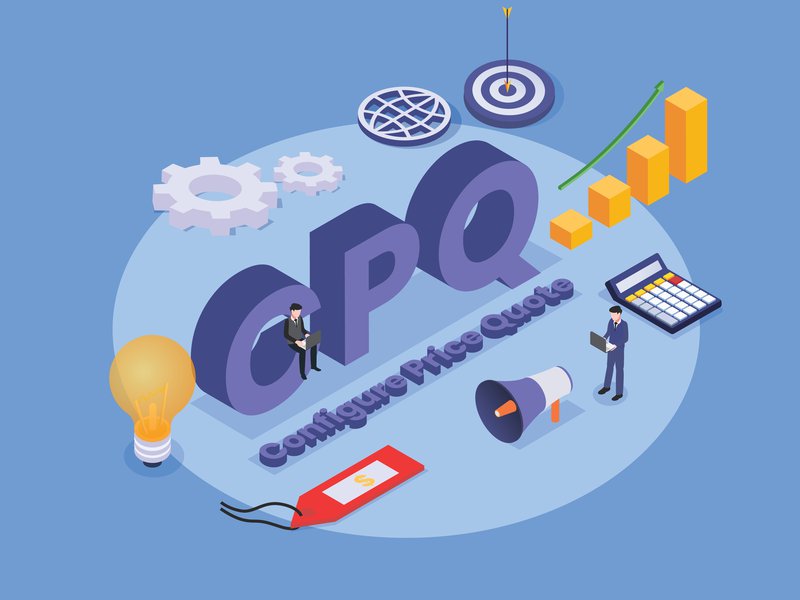All businesses exist to profit. Whether you’re operating a physical brick-and-mortar store or a digital commerce site, the goal remains the same: making money is the name of the game. Needless to say, generating revenue is easiest when there’s little (or if you’ve managed to corner the market, zero) competition.

In 2022—a year well into the digital era and on the backside of a global pandemic—this is an incredibly unlikely position to find yourself in. Therefore, learning to manage your eCommerce business in a saturated online market is paramount. Here at Zobrist, our industry-leading team works tirelessly to navigate your company through the inevitable growing pains of online business.
Online Retail Sales Surged in 2020
According to Statista, 2020 online retail sales surged to $4.22 trillion in 2020, from $3.35 trillion only a year prior. This marked the year that concerned consumers shifted to online shopping. In 2021, eCommerce retail sales continued to climb to $4.9 trillion. Analysts predict that eCommerce sales will experience annual growth of *50%* until 2025. In addition, Statista also projects that the share of digital commerce in overall retail sales will grow from 18% in 2020 to 24.5% in 2025.
With eCommerce involving such great capital, opportunities are plentiful for online entrepreneurs willing to put in the work. Your business has already come this far. Pass the torch, and let us help you level up with these five strategies to maximize online growth.
1. SEO Optimization: Give Your Site a Boost

Among your top digital commerce priorities should be directing traffic to your online store. Consumers should be able to find your store easily with a simple online search. After all, they can’t buy what they can’t see. While paying for top space is the easiest way to get noticed, it’s costly. Encouraging search engines to list your site at the top search engine result pages (SERPs) is far more cost-effective. You can achieve SEO optimization in a myriad of ways. For example, you can have customers log in at the last page before checkout, rather than at the beginning. This allows search engine bots to crawl through your site and gather keywords to rank you higher on SERPs!
Applying search engine optimization (SEO) methods for digital commerce is the free and more efficient way to get approval from search engines. This means paying attention to things like aiding your part numbers or product names to be more searchable. This also means adding call-to-action (CTA) links to product pages, so customers have the option of going directly to the purchase page instead of wading through arbitrary pages.
SEO Means Writing for Customers
eCommerce SEO usually entails focusing on headlines and product descriptions to draw searchers to your product pages. However, it also requires optimizing the SEO of your other site pages (such as your homepage, about section, FAQ, resources, and contact pages). Allotting the time to embed search keywords throughout your site, add metadata and backlinks, and accurately name pages/images goes a long way.

Still, when in doubt, always write descriptions for humans, not computers. In the end, it’s the human who will make the decision to buy from your company. So, that’s who you should market to… just with SEO optimization in mind to get them to your page in the first place.
2. Sales Enablement
In a B2C environment, sales enablement is the process of providing customers with the information needed to push them towards a direct sale. However, in a B2B setting, this information system is more geared toward helping the sales team interact with the buyer. Either way, the key is making information readily available.
The complexity of the product determines the extent of the sales enablement process. Salespeople and marketing professionals should have no problem promoting a simple, single-purpose product. However, complex items, such as heavy machinery or specialized components, will require detailed, step-by-step information. This will require sales enablement tools such as the following:
- Experience management tools to help arrange digital assets.
- Product information tools to provide automated, detailed product specifications (including for highly-customized products).
- Commerce management tools to provide assistance with purchasing processes (pricing, quotations, and contracts on demand).
- Order management tools for processing payments/deliveries and managing inventory.
Ensuring the availability of sales enablement tools means customers can more easily learn about your products, and everyone can enjoy a smoother experience.
3. Digital Commerce Cost Optimization
When faced with the task to reduce costs, companies often opt for the direct route: they cut expenses by trimming excess fat. However, this may not be the most effective solution in keeping costs low while also maintaining superior quality. Instead, smart companies practice cost optimization. To do more and spend less, companies need to review their processes carefully. Identifying bottlenecks, redundancies, and inefficiencies go a long way in reducing expenses.
For digital commerce applications, cost optimization follows the same principle. Changes that result in fewer cash expenditures can simultaneously improve processes. Often, this involves introducing a system that reduces errors, automates processes, and increases the efficiency of employees. For example, digitizing the entire sales process often proves more efficient than routing paper documents. Incorporating digital signatures not only saves on printing costs but also reduces the time needed to shuttle documents back and forth.

4. Better Your Digital Commerce Site by Improving User Experience
A digital commerce transaction becomes more enjoyable when eCommerce sites work to provide customers with a great user experience (UX). When users spend more time trying to navigate a site than learning about a product, the chances of closing the sale decrease significantly.
User experience isn't limited to just website design or navigation. It also includes ensuring that customers don’t get lost in the buyer’s journey. Adding small touches, such as a clear CTA (“Sign up for a free trial”, in lieu of “Free Demo”), or automatically displaying tax and shipping costs can help simplify the buyer’s journey. Plus, having options – like chatbots/virtual assistants – when a customer service representative is unavailable is always a great convenience.
Finally, great customer experience means having your services available across devices. Having an awesome eCommerce site that’s only optimized for desktops neglects on-the-go clients with only a smartphone in hand. In cases like these, providing a mobile-friendly site that runs as fast as its desktop counterpart is necessary.
5. Configure, Price, Quote (CPQ)
Configure, Price, Quote (CPQ) is a highly efficient software application that enables businesses to accurately generate prices for products.

This eliminates the possibility of human error in pricing, which is especially complex when discounts, quantities, and customized orders come into play. With CPQ software readily available, salespeople have an automated tool that provides valid quotes for the products they sell, including off-the-shelf and highly-customizable items.
Keep Up With the Latest Digital Commerce Trends
Digital commerce has exploded and will only soar higher in the next few years. As the old saying goes: the best time to start was yesterday. But if you didn’t, Zobrist Incorporated is here to guide you along your eCommerce business journey at the next best time—today!
Zobrist can help you deliver enterprise-level eCommerce with a mobile-first shopping experience. We specialize in industry-leading eCommerce storefronts, mobile commerce applications, and managed services for companies ready to claim their space in the digital sphere. Book a demo today!




